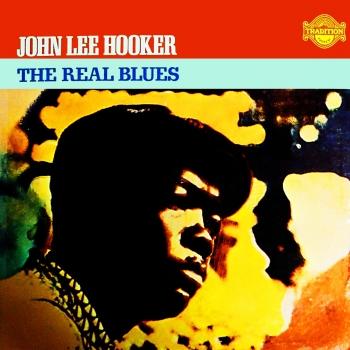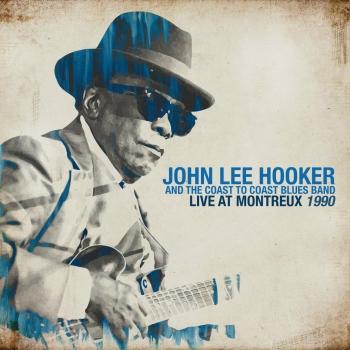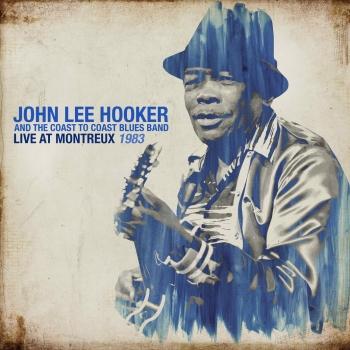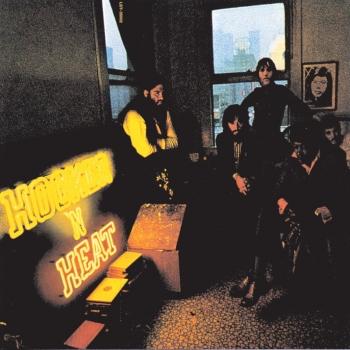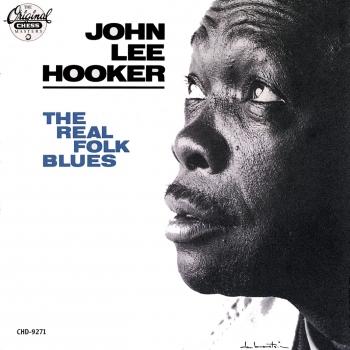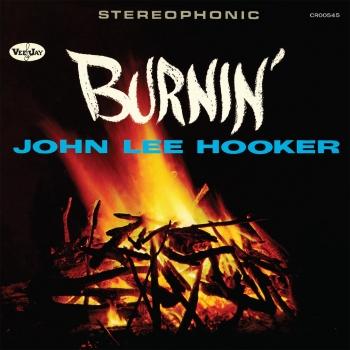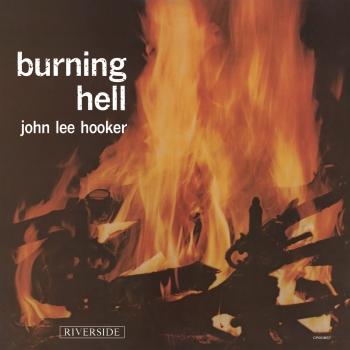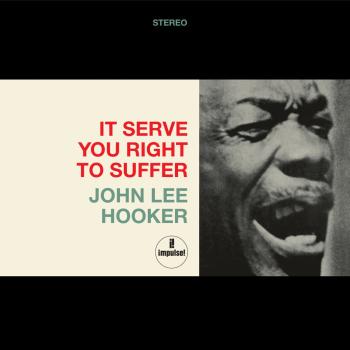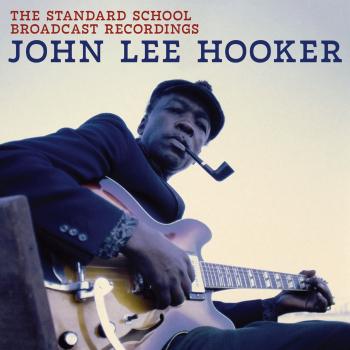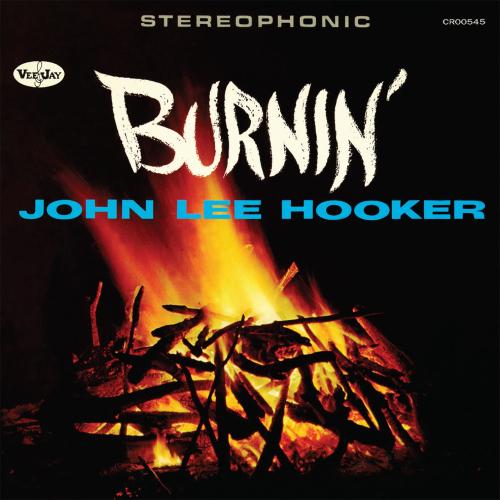
Burnin' (Expanded Edition Mono Remastered) John Lee Hooker
Album info
Album-Release:
1962
HRA-Release:
24.02.2023
Album including Album cover
I`m sorry!
Dear HIGHRESAUDIO Visitor,
due to territorial constraints and also different releases dates in each country you currently can`t purchase this album. We are updating our release dates twice a week. So, please feel free to check from time-to-time, if the album is available for your country.
We suggest, that you bookmark the album and use our Short List function.
Thank you for your understanding and patience.
Yours sincerely, HIGHRESAUDIO
- 1 Boom Boom (Stereo) 02:35
- 2 Process (Stereo) 03:50
- 3 Lost A Good Girl (Stereo) 02:53
- 4 A New Leaf (Stereo) 02:31
- 5 Blues Before Sunrise (Stereo) 03:52
- 6 Let's Make It (Stereo) 02:30
- 7 I Got A Letter (Stereo) 02:46
- 8 Thelma (Stereo) 03:34
- 9 Drug Store Woman (Stereo) 02:49
- 10 Keep Your Hands To Yourself (Stereo) 02:13
- 11 What Do You Say (Stereo) 02:33
- 12 Thelma (Alternate Take) 03:44
- 13 Boom Boom (Mono) 02:35
- 14 Process (Mono) 03:50
- 15 Lost A Good Girl (Mono) 02:53
- 16 A New Leaf (Mono) 02:31
- 17 Blues Before Sunrise (Mono) 03:52
- 18 Let's Make It (Mono) 02:30
- 19 I Got A Letter (Mono) 02:46
- 20 Thelma (Mono) 03:33
- 21 Drug Store Woman (Mono) 02:49
- 22 Keep Your Hands To Yourself (Mono) 02:13
- 23 What Do You Say (Mono) 02:30
Info for Burnin' (Expanded Edition Mono Remastered)
This expanded 60th anniversary edition of John Lee Hooker’s electrifying blues classic, Burnin’, offers both stereo and newly mixed mono versions of the album. The tracklist features the King of the Boogie’s signature hit, “Boom Boom,” plus a previously unreleased alternate take of “Thelma,” captured during Hooker’s 1961 session.
Known fondly as “King of the Boogie,” John Lee Hooker (1917-2001) was one of the most important blues artists of all time, whose work had a significant impact on modern music. Born in Mississippi to a family of sharecroppers, Hooker learned how to play the guitar at a young age, picking up his distinctive technique from his stepfather. In his 20s, he relocated to Detroit, where he spent his days as a janitor in an auto factory and his nights pursuing a career as a musician. He scored his first No.1 R&B hit with one of his earliest recordings, 1948’s “Boogie Chillen,” followed by singles like “Hobo Blues,” “Crawlin’ King Snake,” and “I’m in the Mood,” all of which landed in the R&B Top Ten. But these recordings typically featured a simple set-up: just Hooker alone in the studio, accompanying himself on guitar and keeping the beat with his foot. By the turn of the ‘60s, when Hooker signed to Chicago’s Vee-Jay Records, his sessions began to expand—initially with a second guitarist or a harmonica player (as heard in albums like Travelin’ and The Folklore of John Lee Hooker). Burnin’, however, was a stylistic departure that would not only bring the bluesman a new generation of fans, but would also change the course of his career.
Recorded in just one day in November 1961, Burnin’ paired Hooker with a full, electric band for the first time on record, with six of the most talented musicians of the era—all of whom served as members of Motown Records’ house players. Joining Hooker was keyboardist Joe Hunter, bassist James Jamerson, guitarist Larry Veeder, and drummer Benny Benjamin. A horn section, featuring saxophonist Hank Crosby and baritone saxophonist Andrew “Mike” Terry, added additional textures to the songs. These men, who soon came to be known as the Funk Brothers, would appear on the biggest hits of the decade, backing sessions by the Supremes, Marvin Gaye and Tammi Terrell, the Temptations, and Stevie Wonder.
The material that the group covered that day—predominantly originals by Hooker—was also incredibly strong. Among them was “Boom Boom,” considered to be one of the most important songs in recorded music. With its catchy riffs, airtight rhythms, and utterly cool vocals, the song would become Hooker’s signature hit and an instant blues standard. But the recording was an outlier for the bluesman, as Bill Dahl explains in his liner notes. “Hooker had a rare gift for improvising songs in the studio, sometimes incorporating lyrics from other sources and seldom playing anything the same way from one take to the next. It was an impromptu mindset that often left his sidemen in the unenviable position of either sinking or swimming. But he happened to have a song in mind for this date.’” Dahl continues, “The tension between the stop-time vocal passages in ‘Boom Boom’ and the release whenever the band broke into a straight-ahead jumping rhythm was a fresh development in Hooker’s massive songbook. Arrangements this concisely conceived weren’t John Lee’s primary strength, but he was proving surprisingly open to updating his sound more than a decade into his recording career.”
Released as a single by Vee-Jay in the spring of 1962, “Boom Boom” became Hooker’s biggest hit in more than a decade, spending eight weeks on Billboard’s R&B chart and peaking at No.16 by the summer. It was also one of only two songs by the blues star to break the Billboard Hot 100, landing at No.60. 30 years later, in 1992, the timeless song entered the UK pop charts’ Top 20 (thanks to an appearance in a commercial for Lee Jeans). Music critic Charles Shaar Murray, meanwhile, proclaimed it to be “the greatest pop song [Hooker] ever wrote.”
While “Boom Boom,” which opens the record, was the only charting single off Burnin’, the album offers a trove of standout performances and stellar songwriting. Among the highlights is the swinging—and slightly foreboding—“Thelma,” in which Hooker assures his cheating lover that he forgives her. His increasingly frenzied vocals, however, tell another story. Equally charged is the spoken word “Drug Store Woman,” in which the artist tells his woman (in his signature drawl) to stay home, rather than buy beauty products and stockings at the store. The mournful “Blues Before Sunrise,” written by Leroy Carr, finds Hooker delivering a particularly stirring and emotional performance.
On the other end of the spectrum is “Let’s Make It,” a sprightly, passionate tune based on just one single chord. Hunter and Terry shine particularly brightly, as they drive the momentum of the seductive track. Additionally, Dahl calls attention to “Keep Your Hands To Yourself,” arguing that the song is “the most unusual item [on the album], which opens with the unmistakable riff from the Champs’ ‘58 rock and roll instrumental smash ‘Tequila.’ Unlikely though it seems, that repeating riff, seemingly detached from the blues milieu, made a perfect backdrop for Hooker to threaten any would-be suitors crazy enough to romance his lady.”
While Hooker maintained a prolific output during this period, it’s safe to say that Burnin’, released in March 1962, was a coveted record for countless aspiring rock musicians. Across the Atlantic, bands like the Rolling Stones and the Yardbirds borrowed heavily from Hooker’s sound, while The Animals scored a hit with their own rendition of “Boom Boom” in 1964. As the decade continued, Hooker’s star only grew. Embraced by the counterculture scene, Hooker regularly shared the stage with many of the biggest folk and rock acts of the day and performed at a number of major festivals. Decades later, “Boom Boom” would be inducted into the GRAMMY® Hall of Fame, the Blues Foundation’s Hall of Fame, and would rank on the Rock and Roll Hall of Fame’s “Songs That Shaped Rock and Roll” list.
Throughout the latter half of the century, Hooker maintained a steady pace of studio work, collaborations, and live shows. At 72, he released the biggest album of his career, The Healer, which earned him his first GRAMMY® Award, and sold more than a million copies. He found continued success with albums like Boom Boom and Chill Out in his final decade. Among his many honors, Hooker was inducted into the Blues Hall of Fame in 1980 and the Rock and Roll Hall of Fame in 1991. He received a star on the Hollywood Walk of Fame and was celebrated with a GRAMMY® Lifetime Achievement Award in 2000. Hooker was also a recipient of the highly prestigious National Heritage Fellowship from the National Endowment for the Arts—the highest honor that can be bestowed upon those in the folk and traditional arts by the US government. Today, Hooker’s legacy lives on through his extensive catalog of recordings, as well as through the many artists whose music he inspired. His work can be heard frequently in films and TV shows, while many of his songs have found a second life through sampling by hip-hop and electronic music’s biggest acts.
John Lee Hooker, guitar, vocals
Hank Cosby, tenor saxophone
Andrew "Mike" Terry, baritone saxophone
Joe Hunter, piano
Larry Veeder, guitar
James Jamerson, bass
Benny Benjamin, drums
Digitally remastered
John Lee Hooker
Known to music fans around the world as the “King of the Boogie,” John Lee Hooker endures as one of the true superstars of the blues genre: the ultimate beholder of cool. His work is widely recognized for its impact on modern music – his simple, yet deeply effective songs transcend borders and languages around the globe. Each decade of Hooker’s long career brought a new generation of fans and fresh opportunities for the ever-evolving artist. He never slowed down either: As John Lee Hooker entered his 70s, he suddenly found himself in the most successful era of his career – reinvented yet again, and energized as ever, touring and recording up until his passing in 2001.
Born near Clarksdale, Mississippi on August 22, 1917 to a sharecropping family, John Lee Hooker‘s earliest musical influence came from his stepfather, William Moore ̶— a blues musician who taught his young stepson to play the guitar, and whom John Lee later credited for his unique style on the instrument.
By the early 1940s, Hooker had moved north to Detroit by way of Memphis and Cincinnati. By day, he was a janitor in the auto factories, but by night, like many other transplants from the rural Delta, he entertained friends and neighbors by playing at house parties. “The Hook” gained fans around town from these shows, including local record store owner Elmer Barbee. Barbee was so impressed by the young musician that he introduced him to Bernard Besman ̶ a producer, record distributor and owner of Sensation Records. By 1948, Hooker ̶ now honing his style on an electric guitar ̶ had recorded several songs for Besman, who, in turn, leased the tracks to Modern Records. Among these first recordings was “Boogie Chillun,” (soon after appearing as “Boogie Chillen”) which became a number one jukebox hit, selling over a million copies. This success was soon followed by a string of hits, including “I’m in the Mood,” “Crawling Kingsnake” and “Hobo Blues.” Over the next 15 years, John Lee signed to a new label, Vee-Jay Records, and maintained a prolific recording schedule, releasing over 100 songs on the imprint.
When the young bohemian artists of the 1960s “discovered” Hooker, among other notable blues originators, he found his career taking on a new direction. With the folk movement in high gear, Hooker returned to his solo, acoustic roots, and was in strong demand to perform at colleges and folk festivals around the country. Across the Atlantic, emerging British bands were idolizing Hooker’s work. Artists like the Rolling Stones, the Animals and the Yardbirds introduced Hooker’s sound to new and eager audiences, whose admiration and influence helped build Hooker up to superstar status. By 1970, Hooker had relocated to California and was busy collaborating on several projects with rock acts. One such collaboration was with Canned Heat, which resulted in 1971’s hit record Hooker ’n’ Heat. The double LP became John Lee Hooker’s first charting album.
Throughout the late 1970s and 1980s, John Lee toured the U.S. and Europe steadily. His appearance in the legendary Blues Brothers movie resulted in a heightened profile once again. Then, at the age of 72, John Lee Hooker released the biggest album of his career, The Healer. The GRAMMY® Award-winning 1989 LP paired contemporary artists (Bonnie Raitt, Carlos Santana, Los Lobos and George Thorogood, among others) with Hooker on some of his most famous tracks. The Healer was released to critical acclaim and sold over one million copies. The Hook rounded out the decade as a guest performer with the Rolling Stones, during the national broadcast of their 1989 Steel Wheels tour.
With his recent successes, John Lee entered the 1990s with a sense of renewed inspiration. Not only was the decade a time of celebration and recognition for the legendary artist, but it was also a highly productive era. He released five studio albums over the next few years, including Mr. Lucky, which once again teamed up Hooker with an array of artists; Boom Boom, which aimed to introduce new fans to his classic material; the GRAMMY® Award-winning Chill Out; and a collaboration with Van Morrison, Don’t Look Back, which also garnered two awards at the 1997 GRAMMYs®. Throughout the decade, Hooker’s great body of work and contributions to modern music were being recognized not only by his peers, but also by a younger generation. He became a familiar face in popular culture, with appearances on The Tonight Show and Late Night with David Letterman. In 1990, a massive tribute concert took place at New York’s Madison Square Garden, featuring Hooker and an all-star lineup of guest artists. One year later, John Lee was inducted into the Rock & Roll Hall of Fame, while in 1997, he was presented with a star on the Hollywood Walk of Fame. In 2000, shortly before his death, John Lee Hooker was recognized with a GRAMMY® Lifetime Achievement Award, and just one week before his passing, ever true to form, the bluesman spent his final Saturday night playing a now-legendary show to a packed house at the Luther Burbank Center for the Arts in Santa Rosa, CA.
The Hook continues to live on: His music can regularly be heard in TV shows, commercials and films, and many of his tracks have also found a second life sampled in new songs – by the likes of R&B star Brandi, hip-hop legend Chuck D and French electronic musician St Germain, among many others. Most recently, his iconic recording, the 1962 Vee-Jay Records single “Boom Boom,” was inducted into the 2016 GRAMMY® Hall of Fame.
This album contains no booklet.










